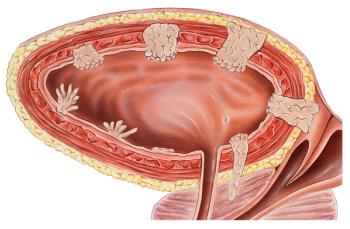
Unexpected Uterine Cancer: Power Morcellation and Mortality
A study recently published in the Journal of Clinical Oncology reported on the association between power morcellation and mortality in women with unexpected uterine cancer who were undergoing a hysterectomy or myomectomy.
The authors point to clinician and researcher suspicions that power morcellation might have a negative effect on the prognosis of uterine cancer, but actual evidence was lacking, which prompted their research in this study to determine whether hysterectomy or myomectomy procedures that included uncontained power morcellation would prove a negative prognostic factor related to mortality risk in women with cancer of the uterus.
The researchers compiled data on hospital discharges recorded in the New York cancer registry, identifying 334 women diagnosed with occult uterine sarcoma, and 843 women diagnosed with occult endometrial carcinoma, all of whom had either a hysterectomy or myomectomy for what clinicians at first believed to be a benign condition. The time frame of the surgeries was October 1, 2003, through December 31, 2013.
Within the cohort, the authors analyzed disease-specific mortality and mortality from all causes in women who had laparoscopic supracervical hysterectomy/laparoscopic myomectomy (LSH/LM), which typically includes uncontained power morcellation. They compared records with those of women who had a supracervical abdominal hysterectomy and total abdominal hysterectomy (TAH), but which did not involve power morcellation. The authors performed multivariable Cox regressions and used the propensity score method to adjust for patient characteristics.
In women who had occult uterine sarcoma, LSH/LM predicted a higher risk of disease-related mortality than TAH did (adjusted hazard ratio [aHR], 2.66, 95% CI, 1.11 to 6.37; adjusted difference in 5-year disease-specific survival, 219.4%, 95% CI, 235.8% to 23.1%). In those women with leiomyosarcoma, there was an association between LSH/LM and increased risk of mortality stemming from disease when compared with supracervical abdominal hysterectomy (aHR, 3.64, 95% CI, 1.50 to 8.86; adjusted difference in 5-year disease-specific survival, 231.2%, 95% CI, 250.0% to 212.3%) and TAH (aHR, 4.66, 95% CI, 1.97 to 11.00; adjusted difference in 5-year disease-specific survival, 237.3%, 95% CI, 254.2% to 220.3%).
In those women who had been diagnosed with endometrial carcinoma, however, there was no remarkable association between method of surgery and mortality related to disease.
The authors concluded that
Newsletter
Stay up to date on recent advances in the multidisciplinary approach to cancer.


























































































